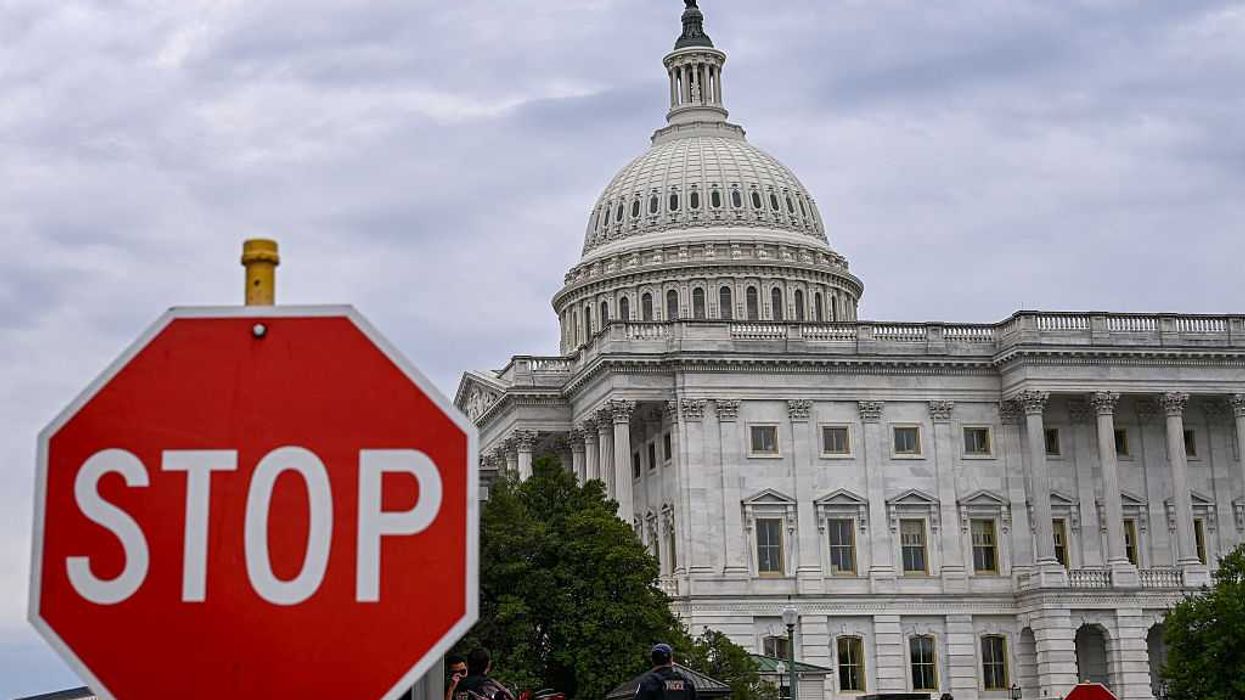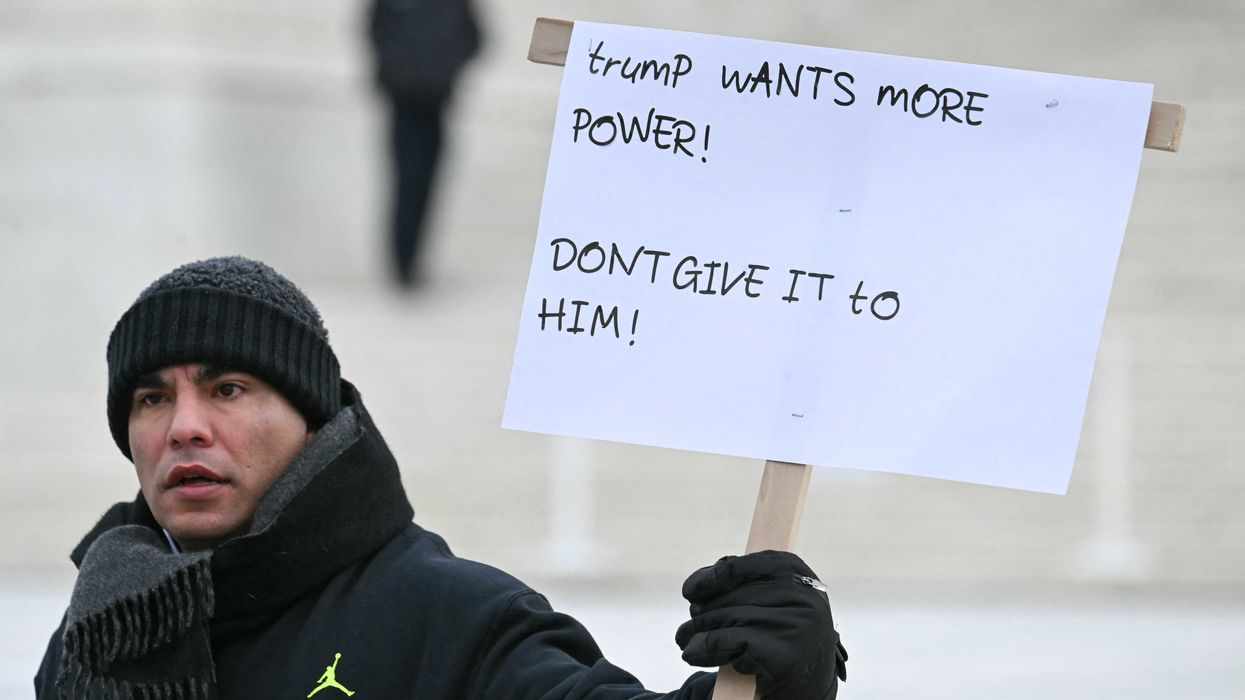GLENN: If you were for a border fence or a border wall, you're for stronger immigration laws or at least enforcing. Not for stronger. You just want to enforce the laws that we have.
PAT: Hateful.
GLENN: You're going to probably change your mind. And this is going to be that moment that I always say, what was the pivot point? This will be the moment where you will say, this is my pivot point. I had never thought about this while we were talking about the border wall. Listen to this.
VOICE: Well, Craig, if this border wall happens, it will be an unprecedented environmental catastrophe.
PAT: This is Jeff Corwin, by the way. Jeff Corwin, who is -- I mean, he's an animal expert. We all know that. Remember, from -- was it Animal Planet, he did all those shows? And now he's on an ABC special.
GLENN: Yeah. Now, this is -- I want you to know --
PAT: Unprecedented.
GLENN: Unprecedented environmental tragedy and disaster.
PAT: Disaster.
VOICE: It's poised to cut through more than 1200 miles of habitat along the border between the United States and Mexico. There are over 90 threatened and critically endangered species that are in the -- in the crosshairs because of this wall. And we've got over 100 migratory birds that will be impacted from this wall.
GLENN: Now, listen to this. I want you to listen to this.
VOICE: The endangered Mexican gray wolf. Only 133 individuals left of this iconic carnivore. This amazing canine. Its head is on the chopping block. And likely could fall prey to extinction. The expanse of the jaguar. Just now, being restored into its habitat in Arizona will likely be extirpated. Pushed back towards the precipice of extinction because of this disastrous wall.
(talking over)
GLENN: Hang on just a second. Animals don't have passports. There are no borders for animals. Okay? They don't have pockets. So we can't require them now to have passports. They do not have pockets. Except for the kangaroo, but that's a different continent. So if we were talking about kangaroos, we could give them passports because they have pockets. Other than that, they don't have pockets. They don't have hands either. So they couldn't really step up to the little thing and they can't talk. It's complicated with animals. Borders are complicated with animals.
PAT: It is.
GLENN: Now, the one I'm worried about because we're talking about an environmental disaster, we're worried about the birds.
VOICE: At the risk of sounding ignorant or foolish, the bird specifically, wouldn't they just be able to fly over the wall?
PAT: This is great. He's almost afraid -- it's such an obvious question. He's afraid to ask it.
GLENN: I don't want to sound ignorant to anyone, but I'm going to dial in some common sense. All right. I'm just going to say it.
PAT: They fly, right?
GLENN: Birds, they can fly left and right, but I think they can fly up and down as well.
STU: Not 30 feet off the ground.
JEFFY: No.
PAT: And, by the way, the wall will not wind up being 30 feet, would be my guess. It will be ten, tops.
GLENN: Yes.
VOICE: Well, it's interesting you should say that, and it's actually an excellent question.
PAT: It is.
GLENN: Stop.
VOICE: And I'm sure many animals that fly can migrate over that wall.
PAT: Okay.
JEFFY: See.
STU: So, yes, they will fly over the wall.
GLENN: Yes.
PAT: So, in other words, sure.
GLENN: So it's a good question because it's an obvious question.
PAT: I didn't think you would ask it because you're on NBC. Who knew?
GLENN: Yeah, it's not a question that you should have asked. But it's a good question.
PAT: It sounds like Fox News propaganda to me. Birds can fly.
VOICE: But many animals actually stay very low. Many of these animals, for example, birds and bats are actually passing close to the -- to the ground's surface because they're heading towards plants.
PAT: I say, if they're that stupid, they probably deserve to run into the wall.
GLENN: Darwin. Darwin. If you're a bat and your sonar radar, whatever it is that makes you fly around without eyes is so bad that you can't find and see a 1700-mile fence --
(chuckling)
GLENN: -- natural selection should kick in for that bat.
PAT: It seems like trees would be killing them too. Right?
GLENN: Right. They're flying low because they're going for the plants. A rock.
PAT: Yeah.
STU: Private fences around homes. Yeah, anything.
GLENN: Come on. A home. A home.
STU: And a parked car. Anything would be --
GLENN: Can I tell you something --
PAT: Are we saying that the wall will be built out of glass and we're going to use Windex on it so they won't be able to see that it's a wall?
GLENN: Thump. Thump. Thump.
PAT: Maybe that's what it is. Maybe that's what it is.
GLENN: But let me tell you something, I think you're all dismissing the pictures that we've all seen of the Great Wall of China and all of the dead birds and the bats on both sides of that wall. Giant piles.
STU: Piles of bats?"
GLENN: And it doesn't -- after a while, the wall doesn't matter because the dead bats are just -- they become ramps. And you just walk on the bodies of dead bats.
PAT: Yeah.
GLENN: Yeah, it's a bat ramp. You're mocking. Were you mocking?
STU: No, I said it was a bat ramp. A bamp.
GLENN: But that was not mocking?
STU: No, no, no. It's a very important part of our security.
GLENN: We should use that. You know what, I'll give that free to the scientific community. Vamps. It's yours, but I ==
STU: Bamp. Bat ramp.
GLENN: Or a bamp. Yeah, bat ramp. A bamp. You can use that in all your -- all your, you know, scientific literature on why this is going to be such a hassle.
PAT: Devastating. Devastating disaster.
GLENN: Devastating disaster for the birds that can't fly.
PAT: They're on the chopping block. The wolves are on a chopping block. Are they actually going to put wolves' heads on chopping blocks and cut their heads off?
STU: Right. The imagery is so great.
PAT: Well, I'm sorry. We can't build this wall until I cut your head off.
GLENN: If there are 150 of them, what do you say that we make sure that it's not all the male wolves on one side and female wolves on the other.
STU: Or, you know, there is an argument against free-range wolves. I don't know if anyone knows this.
GLENN: No, no. These are beautiful animals. They're carnivores. They're beautiful carnivores.
STU: That sounds terrible, actually.
GLENN: Have you ever seen a wolf?
PAT: Yeah.
GLENN: In real life?
PAT: Yes.
GLENN: They are terrifying.
STU: Yes.
GLENN: I saw -- you know, Little Red Riding Hood, it was a wolf that ate her and the grandma. I mean, hello.
STU: That's right.
PAT: And then jaguars. Do we really want jaguars roaming free on the border?
GLENN: I'd like them to stay on the Mexican side. I mean, that's cool. I don't have a problem with that.
STU: Yes.
PAT: Yeah. Yeah.
STU: That's one of the benefits of the wall. I think we put all the dangerous animals on the other side of it.
GLENN: On that side. You can have the jaguars. I love that about you and Mexico. And I'll go visit and see those jaguars. You let them mate on your side of the wall.
PAT: But even so, I'm kind of confused as to why they can't just move out of the way of the wall being built and then go back their business.
STU: Well, the imagery there is amazing. These animals are in the crosshairs. They're on the chopping block.
PAT: Yeah.
STU: Like none of these things are real.
PAT: What are you talking about?
STU: What, they wouldn't move 100 yards? I understand that that is -- it could be theoretically --
GLENN: Okay. Okay. Okay. Okay.
PAT: There's actually a river between the two countries too. Now that they navigate --
GLENN: Okay. Okay. All right. Oh, my gosh.
JEFFY: Thanks to the bridge.
GLENN: Do we need to look? Do I need to bring up north and South Korea where all of the DMZ, where all of the little wolf family members are living in freedom and the -- and the North Korean wolves are living in slavery and they're not able to see each other anymore and they don't know if they're alive or dead?
Imagine, you're a wolf, and you don't know if you're alive or dead. If you're -- if your relative who you love is on the other side of the wall with a concussion or worse because it didn't see the wall and ran right into it, trying to come home to you. It's wrong. It was wrong with the Berlin wall. It was wrong with the Great Wall of China. Jina. It's -- it's wrong for birds. It's wrong for bats. It is wrong for panthers, jaguars. BMWs.
PAT: Mexican timberwolves. Whatever.
GLENN: All of them.
PAT: All of them. Separating wolf families.
GLENN: Bad. You go ahead. You break up the families.
Could we -- could we go to Victoria in New York. Yes, Victoria. You're on. More on bird talk. You're on bird talk. Go ahead. Hello, Victoria. Line one.
That's Mary. Hang on, put Mary on hold. And let's go to Victoria. Line one, please. There we go.
Victoria, hi.
CALLER: Yes, hi. I just love this show.
GLENN: Thank you.
CALLER: I wanted to make a comparison here. They're so concerned about the wall.
GLENN: Uh-huh. Uh-huh.
CALLER: But, meanwhile, what about those windmills that are out there killing birds that are supposed to be great for the environment?
PAT: Right. Where is Jeff Corwin on those?

 ALEX WROBLEWSKI / Contributor | Getty Images
ALEX WROBLEWSKI / Contributor | Getty Images
 JIM WATSON / Contributor | Getty Images
JIM WATSON / Contributor | Getty Images Joe Raedle / Staff | Getty Images
Joe Raedle / Staff | Getty Images AASHISH KIPHAYET / Contributor | Getty Images
AASHISH KIPHAYET / Contributor | Getty Images